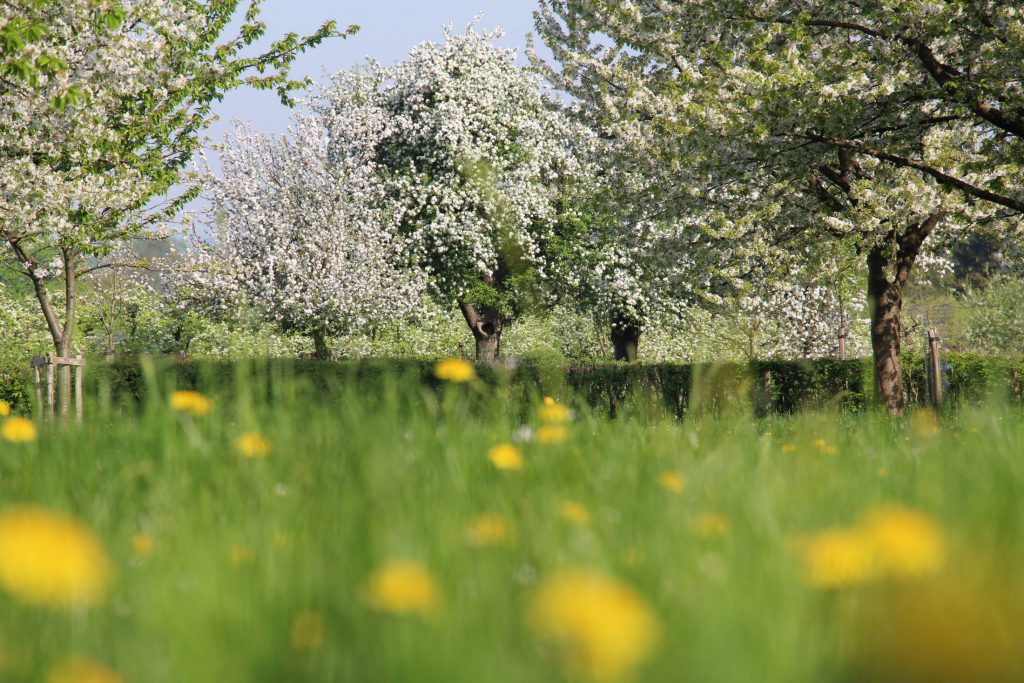Standard fruit trees in Roman times
Elzer footpath, Bocholtz
Apples, pears, plums, walnuts and chestnuts: before the Romans came, we had never heard of them. The Romans enriched our regions with tree species that originally grew further south. When they left our country, the cultivation of fruit became an activity of monastic gardens and noble estates. Only in the late Middle Ages did fruit trees gain a permanent place on farms, although the orchards were still for private use.
At the beginning of the 19th century, in large parts of the Netherlands, almost every village or hamlet was surrounded by a belt of standard orchards. During the agricultural crisis around 1900, farmers exchanged their grain cultivation for fruit growing. But after 1950, competition among growers became so great that many farmers switched to cows and pigs, or to low-stem trees. These are much smaller, specially bred and produce more fruit than tall standard trees. Because of fruit surpluses, the European Union introduced grubbing-up premiums in 1960. The standard fruit tree slowly disappeared from the landscape.
Today, interest in standard orchards is growing again. The planting of tall fruit trees by IKL since the 1980s has made South Limburg more attractive for recreation. Private individuals also increasingly embellish their yards with a home orchard, with the help of IKL. The trees are a paradise for insects, birds, bats and other mammals. Special “standard brigades” ensure the management of the orchards.
